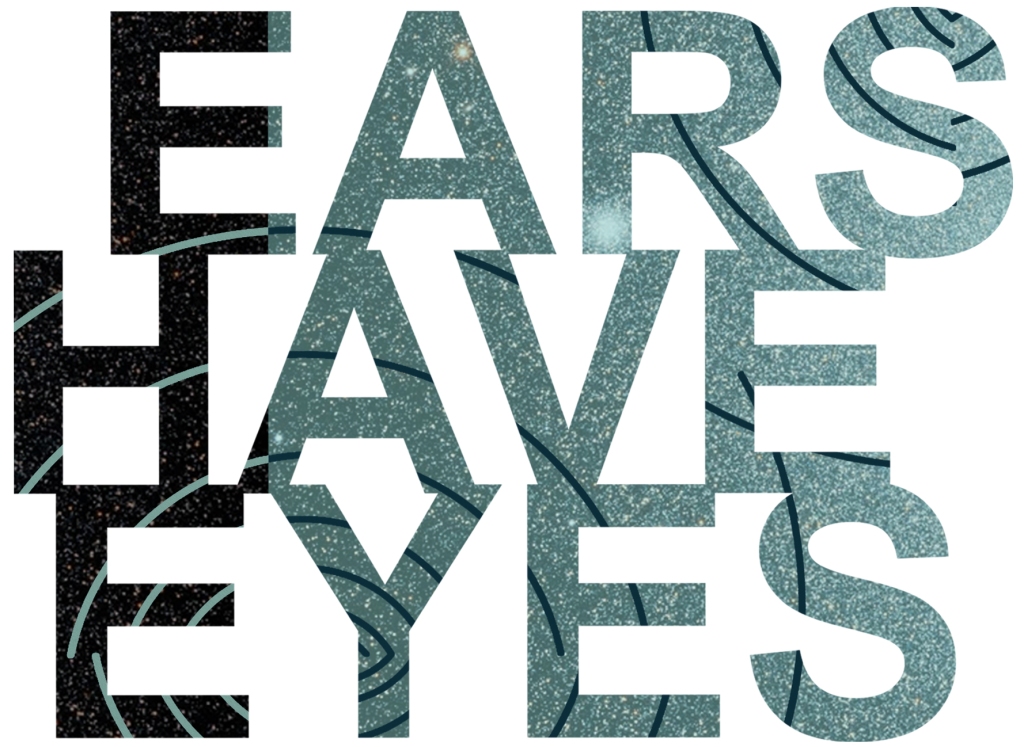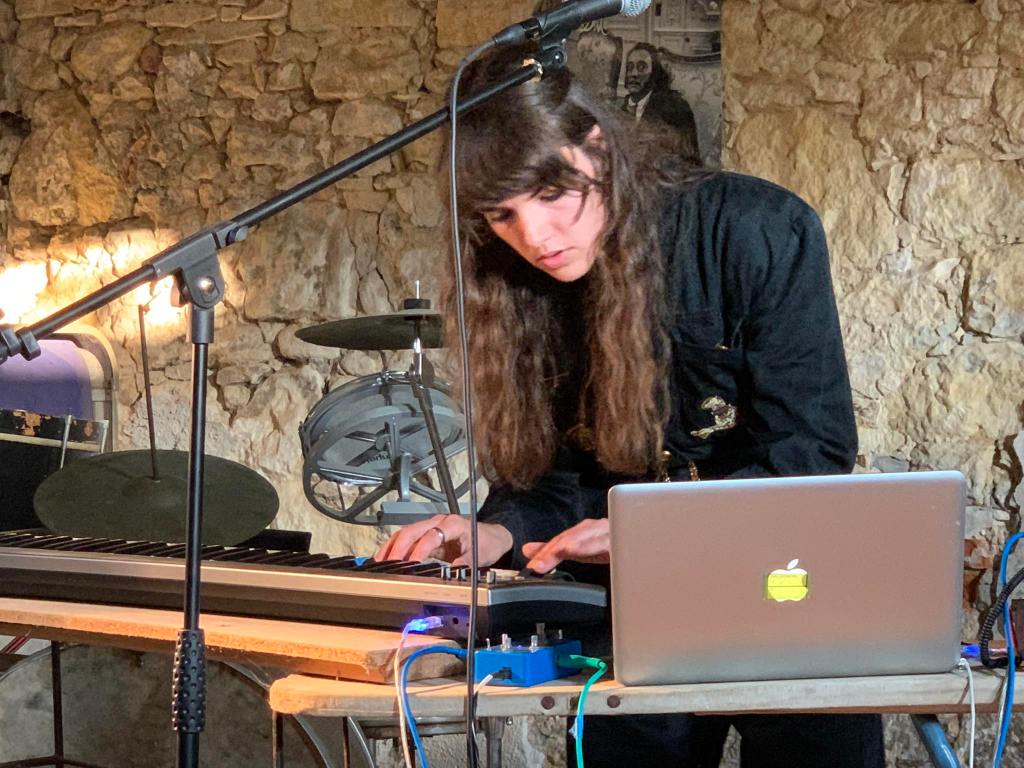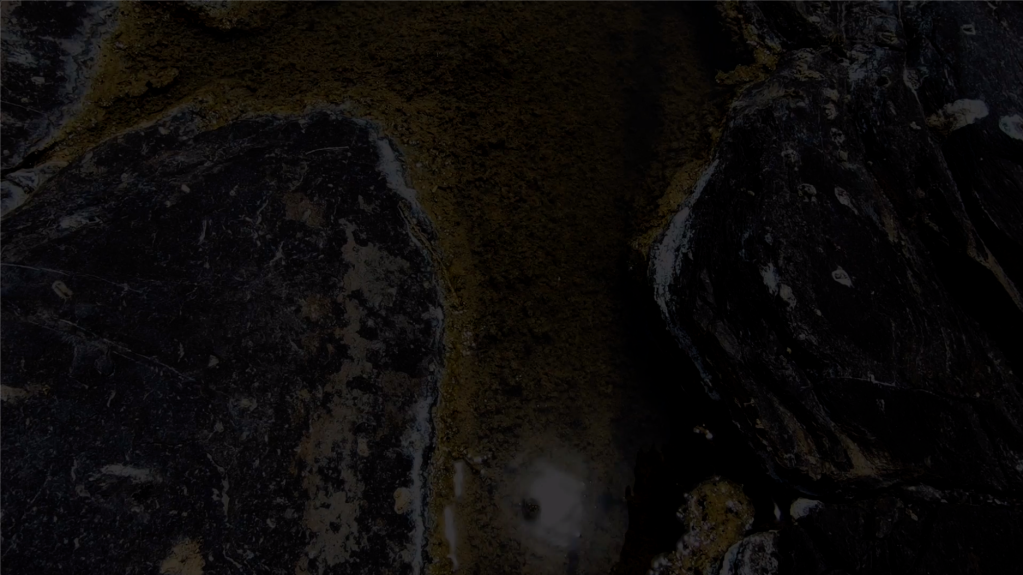
EARS HAVE EYES // Episode 20
Airing Wednesday, September 13, 2023 at 8 pm MST
on CJSW 90.9 FM
PART 2 of 2
FOREST PERSPECTIVE:
whispers, wildfires, and rewilding words
Constantine Katsiris
Deep Dive Sound
Sir Edward Dekeyser
Ingetrapt
Jaidy Díaz
Jenna Swift
Jorge Martínez Valderrama
Mike Hovancsek
Wayne DeFehr
Co-hosted by Wayne Garrett & Caitlind Brown, produced and edited by Caitlind Brown, supported by Kaamil Kareemi and CJSW 90.9 FM.
BIG NEWS! We’re pleased to announce that, as of this month, EARS HAVE EYES is available on CJSW and Golden Co-Op Radio in Beautiful British Columbia, on the traditional territory of the Ktunaxa People. You can listen online at goldencoopradio.ca. Thanks to Claire Dibble, and our gratitude, as always, to the folks at CJSW who have been airing this program since the beginning!


EARS HAVE EYES is a monthly sound art radio program airing on CJSW 90.9 FM in Calgary/Mohkinstsis. You can listen to podcasts of previous episodes here.
In North America, it’s been a Summer of smoke, evacuations, and loss – not just for people, but for entire ecosystems. Wildfires are a natural forest cleansing process, but the type of wildfires we’re seeing in our carbon-superheated world are faster, hotter, and more pervasive than ever before. In acknowledgement of July as the hottest month ever recorded in human history, this month’s radio program invited local, national, and international sound artists to reflect on the non-human perspectives of forests.
FOREST PERSPECTIVE asks: how can we learn to think on the micro and macro scales of the forest, to prioritize the perspective of our non-human kin? Can radio be used as a tool for rewilding, building empathy and action between human listeners and the forests that surround, touch, and sustain us?
Thanks to the participating artists and our friends at CJSW!


Constantine Katsiris
Constantine Katsiris has been a composer of experimental electronic music for nearly three decades. An avid phonographer, he has conducted field recording expeditions around the world from urban settings like Prague and Paris to more remote regions such as the Brazilian Amazon rainforest. He is also passionate about showcasing, broadcasting, and disseminating sound works as a curator of exhibitions and concerts for galleries and festivals, as a programmer on community radio, and as the director of the Panospria record label for sonic experimentation.
Lago Mamori Amazonas is a field recording from the Brazilian Amazon rainforest offers a raw and unedited glimpse of the unique natural soundscape found therein. Even being experienced with only the ears, the incredible biodiversity of the region is evident. Ideal for quiet meditation or introspective times of reflection. Recorded in 2011 as part of the Mamori Sound Project led by ecosystem biologist, entomologist, and sound artist Francisco Lopez. This expedition to Mamori Lake had a special focus on creative approaches to working with field recordings through an extensive exploration of natural sound environments over an intensive two week period.

Deep Dive Sound
Rafael Diogo (Deep Dive Sound) is an ambient composer and sound designer based in London, whose works move across experimental paths and natural investigations into everyday sounds, focused on the manipulation and mixture between organic materials, synthesis and acoustic instruments to convey experience. He creates soundscapes in a variety of moods and shapes, favouring the sound of stories embedded into objects and places, a feeling of great immediacy, the phenomenological sense of place and time, the despair for that loss, a memory. The practice of traveling enables Rafael to embrace the boundless possibilities of perceiving the world from many distinct angles. The artist’s body of work maintains both an ecologic focus that emphasises nature’s challenges and fragilities and a wide-eyed spirit of exploration, creating unforeseen liminal soundscapes that can reveal hidden information about a place or a moment that no longer exists.
About Time for Rainforest:
“Ingloriously, the majestic trees find themselves at the mercy of human greed, as avaricious actions spark fires and fell forests solely for profit. “Time For The Rainforest” embarks on a profound endeavour to craft a languorous, ethereal symphony using solely the rainforest’s own field recordings. Delicate artistry weaves through the sonic landscape, subtly manipulating the sounds to evoke a mesmerising experience, akin to discovering new realms within the auditory realm. In our modern era, an insatiable yearning arises for perspectives that forge an intimate bond with nature. This soundscape masterfully captures nature’s potent ability to heal, reflecting upon both contemporary and historical aspects. The ancient “icaros”, sacred medicinal songs, become interwoven with the rainforest’s organic sounds and ceremonial visuals, forming a tapestry of social memory. This auditory masterpiece transcends the mere visual and becomes an artifact of our collective heritage, summoning memories of a time when nature thrived independently, healing both itself and humanity. Thus, it fosters a sustainable connection, uniting nature, humankind, and culture in harmonious coexistence.“

Sir Edward Dekeyser
Edward Dekeyser studied electroacoustic composition at the Royal Conservatory of Mons (Belgium) and took prior steps in field-recording, multiphonic composition and diffusion at the sound design atelier of the Royal Academy of Antwerp (Belgium) under the direction of George De Decker – where and when this soundpiece saw the light. Awarded in 2021 first place in ‘L’Espace du son: Concours de spatialisation’, an international competition from Influx – Musiques & Recherches (Belgium) for spatial interpretation of electroacoustic oeuvres on a world-renowned acousmonium of over 80 loudspeakers. Since been active as a composer and interprète of the acousmatic repertoire, incorporating the parameter of ‘spatial perception’ to his musical approach as its most important factor. Member of artist-run and multimedia atelier toitoiDrome in Antwerp and FM-radio enthusiast.
A Forest w Lili Wu ( 吴烨 ) is a mixed-music composition for soprano-voice Lili Wu ( 吴烨 ), resampled harp & electronics – as originally performed in quadrophonics on 24th june 2016 in Antwerp (Belgium). “It’s like walking in a big forest, you have the infinity of shapes, they never have any ending . You have the way to go, but it never ends”.

Ingetrapt
Ingetrapt is a French sound artist who creates pieces combining testimonies and music to shed light on sociological or philosophical issues.
Wood Wild Web is an intermedia sound piece about communication between trees. The question is: how do you think trees communicate with each other? Testimonies, noise music, field recording, flutes, organs and guitar. This French-language piece was created as part of the AUDIOBLAST 11 – Transmitting by the Woods exhibition: https://apo33.org/?p=9300

Jaidy Díaz
Jaidy Díaz currently works as an independent artist and is an associate professor at the National University of Colombia, in the Interdisciplinary Master’s program in Theater and Live Arts. Her professional work, of an interdisciplinary nature, explores the edges of visual, performative and sound languages. Her interests stem from the critical and sensitive observation of the current world, the phenomena of power, the voices of the periphery and the micro story, are part of her operations in the creative process.
About Unlived Memories:
“The Colombian jungle in the department of Caquetá extends an invitation to listen to the testimony of a war recorded in fragments by a guerrilla woman who in her desperation captures with her cell phone violent moments of the human conflict, immersed in the forces of nature and the vitality of the flora and fauna of the landscape.
About 7 years ago, the Colombian president Juan Manuel Santos implemented a government plan called the Peace Process with the purpose of ending the armed conflict in Colombia, between the Colombian government and the FARC-EP (guerrilla groups), in this period many guerrillas and rebels surrendered their weapons and became regular citizens under the law.
La Negra, was the name of one of these guerrilla women who took part in this process. She returned to her homeland in the Montes de Maria of the Colombian Caribbean, and after a period of meeting and research, she gave me her records and use just a few of them to compose these Unlived Memories.
In countries where war does not exist, the closest encounter with it is through cinematographic fiction, however, its rawness is lived in such a way in our country that the place of fiction is overflowed by reality. The Colombian jungle and nature hide great testimonies of a war as old as terrible. La Negra is no longer with us today, but her records remain. With care and high ethical sense, I transform them and now I share them with you.
Stereo composition of a documentary sound recording recorded on a cell phone. 44.1hz. 2020.”

Jenna Swift
Jenna Swift is an independent artist and writer and nature educator based on the Canadian prairies. Past honours include an internship at the Smithsonian Center for Folklife and Cultural Heritage and the Canadian Art Foundation’s Writing Prize. Swift’s tactile, creative research has been shared in workshops hosted by the School of Making Thinking and the Klondike Institute for Arts and Culture.
Jenna’s work on EARS HAVE EYES features a bespoke pedal steel sub-track composed for her work by Wayne Garrett.
About Tenebris Sylvarum:
“Tenebris sylvarum: the darkness of forests. Give your eyes time to adjust to the silvering decay of burnt branches. The ghost forest inhabits its dark garment, embroidered by an unseen phylum. Feeling a way forward, the web of sensation mapped by outstretched palms: the inscription you’ve borne from birth.
Visual artist Louise Bourgeois fed her secrets to spiders, in exchange for their silken images. A collusion that circumscribed her life, spent dismantling and repairing this matrilineal legacy. Mother as weaver of the dark secret of begetting. The self that cleaves in two to make another. Copies printed in blood never forget this origin.
The tenacity of cellular memory, occupying the spaces between organs. Mnemosyne is the mother and author of this, as the goddess of memory and mother of the Muses in Greek mythology. Art historian Aby Wargurg’s Mnemosyne Atlas was a way of charting persistent cultural ideas across time, clustered on paste board panels wrapped in black cloth.
There is an apocryphal, oft-repeated anecdote about Warburg’s mania to understand the replication of expressions across the face of our collective visual record – a wince echoing across faces of marble and flesh. It is said that the historian took to confiding in moths. Confined to a neurological clinic in Switzerland, pale parentheses fluttered outside the window of his cell, while commas punctuated the garden by day. What he told them faded as quickly as their paper wings, secrets with short lifespans, told generationally.
I have forgotten most of what I arrived here knowing, having swallowed my first words. I spoke what could be easier understood from such a small mouth. Now words trace the curve from septum to philtrum, a shallow pool teeming with consonants and vowels. Sweat extinguishes your name before I can say it.
What if I loved that the old Singer could pierce sequences of holes, caring less about sewing and binding with the thread of language than breathing through those intervals. Only the smallest words could fit through the eye, anyways.
Roots finger their way through the filmic dark – pale cinema of incremental growth. Coral root lacerations rise from pine root rhizomes, sidestepping sunlight to skirt the need for photosynthesis entirely. What if our need for each other is greater than our need for all other nutrients?
Trees are painted from the inside – all of our likenesses peering out from paper birch and poplar. The languor of leaves slumped to the ground, wings hung in the branches. In the gathering dark we draw the salt and seed from each other in order to live.“

Jorge Martínez Valderrama
Jorge Martínez Valderrama reflects on various aesthetic phenomena and concepts within contemporary, electro-acoustic and acousmatic music. His work is based on field recording and is developed under the concepts of perception, alteration, poetics and pareidolia. His artistic interest focuses on listening and reflecting on the implications of sound in different contexts and ecosystems, collective creation and sound-environmental activism.
Commissioned by SD CELAR at the British Museum as part of a digital artistic residency, Saa Ñu’ú is a space for listening – echo from sound materialities, which dialogues and weaves complex conceptions of pre-colonial Mesoamerican cultures through elements of their sound universes. The sound piece establishes metaphorical relationships with different acoustic devices and new technologies through the execution of sound artifacts of pre-hispanic tradition, as well as poeticized field recordings in natural landscapes and narrations. The work establishes conceptual relationships with evocative sounds of symbols, figurative and representative elements of the Mesoamerican worldview referred to in manuscripts, codices and other historical documents. Saa Nu’ú is a soundscape that evokes Mesoamerican sound universes, particularly those in the Mixtec culture. It is presented as a work whose creative process takes place in an open, collaborative and participatory space. For this composition, pre-hispanic instruments and field recordings of the Puebla-Oaxaca Mixtec border were used.

Mike Hovancsek
Mike Hovancsek is a musician, artist, and mental health counselor. He typically makes acoustic, multicultural music but “Anthropocene Redux” is a rare electronic piece.
Anthropocene Redux uses sound to describe fragile ecosystems struggling to survive while choking on the plastic waste of human consumption.

Wayne DeFehr
Wayne DeFehr is a classically trained pianist in the Royal Conservatory of Music program, and began experimenting with creating his own sounds through field recordings while composing for programs hosted by the Boreal Electroacoustic Music Society. Wayne has served on the BEAMS board for several years.
About Breathing Forest:
“I recorded the sounds of the trees in this piece on a windy afternoon in one of the urban forests in Edmonton, not far from a ravine with a creek that feeds into the North Saskatchewan River. The pitched sounds and tones are drawn from resonances within the undulating sonic field of the wind and the leaves. These sounds remind me of younger days, growing up in a rural town in Manitoba where I would lay down in the grass and watch the clouds and listen to the wind rustling the leaves of the big poplar trees. This is such an important and relevant theme these days, and I agree that radio programs that feature these wild wind in the forest sounds, which might fall into the background as technology becomes more ubiquitous, could play a vital role in “re-wilding” our experience of nature and the earth.”

Thank you to the artists & listeners!
Special thanks to CJSW.
Want to share your sound art on future episodes of EARS HAVE EYES?
Visit this link for more information.